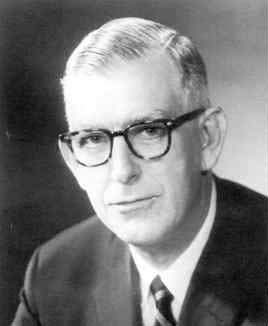


 تاريخ الرياضيات
تاريخ الرياضيات
 الرياضيات في الحضارات المختلفة
الرياضيات في الحضارات المختلفة 
 الرياضيات المتقطعة
الرياضيات المتقطعة
 الجبر
الجبر
 الهندسة
الهندسة 
 المعادلات التفاضلية و التكاملية
المعادلات التفاضلية و التكاملية 
 التحليل
التحليل
 علماء الرياضيات
علماء الرياضيات |
Read More
Date: 3-11-2017
Date: 29-10-2017
Date: 22-10-2017
|
Died: 29 March 1980 in Orleans, Massachusetts, USA

William Cochran took the University of Glasgow Bursary Competition in 1927 and he was placed first. The award of a bursary allowed him to take his first degree at Glasgow and he was awarded an MA in mathematics and physics in 1931. He won the Logan Medal for the best student in the Faculty of Arts and won a scholarship to study mathematics at Cambridge.
At Cambridge he took John Wishart's course in mathematical statistics, then proceed to take a practical course in the School of Agriculture. In 1934 R A Fisher left Rothamsted Experimental Station to accept the Galton chair at University College, London and Frank Yates became head at Rothamsted. Cochran was offered the vacant post but he was still not finished his doctoral course at Cambridge. Yates later wrote:-
... it was a measure of good sense that he accepted my argument that a PhD, even from Cambridge, was little evidence of research ability, and that Cambridge had at that time little to teach him in statistics that could not be much better learnt from practical work in a research institute.
Cochran accepted the post at Rothamsted where he worked for 5 years on experimental designs and sample survey techniques. During this time he worked closely with Yates. At this time he also had the chance to work with Fisher who was a frequent visitor at Rothamsted.
Cochran visited Iowa Statistical Laboratory in 1938, then he accepted a statistics post there in 1939. His task was to develop the graduate programme in statistics within the Mathematics Department. In 1943 he joined Wilks research team at Princeton.
At Princeton he was involved in war work examining probabilities of hits in naval warfare. By 1945 he was working on bombing raid strategies.
He joined the newly created North Carolina Institute of Statistics in 1946, again to develop the graduate programme in statistics. From 1949 until 1957 he was at Johns Hopkins University in the chair of biostatistics. Here he was more involved in medical applications of statistics rather than the agricultural application he had studied earlier.
From 1957 until he retired in 1976 Cochran was at Harvard. His initial task was to help set up a statistics department, something which he had a great deal of experience with by this time. He had almost become a professional at starting statistics within universities in the USA.
Cochran did much to promote statistics within the USA. R L Anderson in [1] sums up Cochran's contribution as follows:-
Cochran was that rarity, a man with both a keen mind and the desire to use it for the benefit of mankind. His office was always open to the struggling student, nonplussed scientist, or inquiring citizen.
Articles:



|
|
|
|
دراسة تحدد أفضل 4 وجبات صحية.. وأخطرها
|
|
|
|
|
|
|
جامعة الكفيل تحتفي بذكرى ولادة الإمام محمد الجواد (عليه السلام)
|
|
|